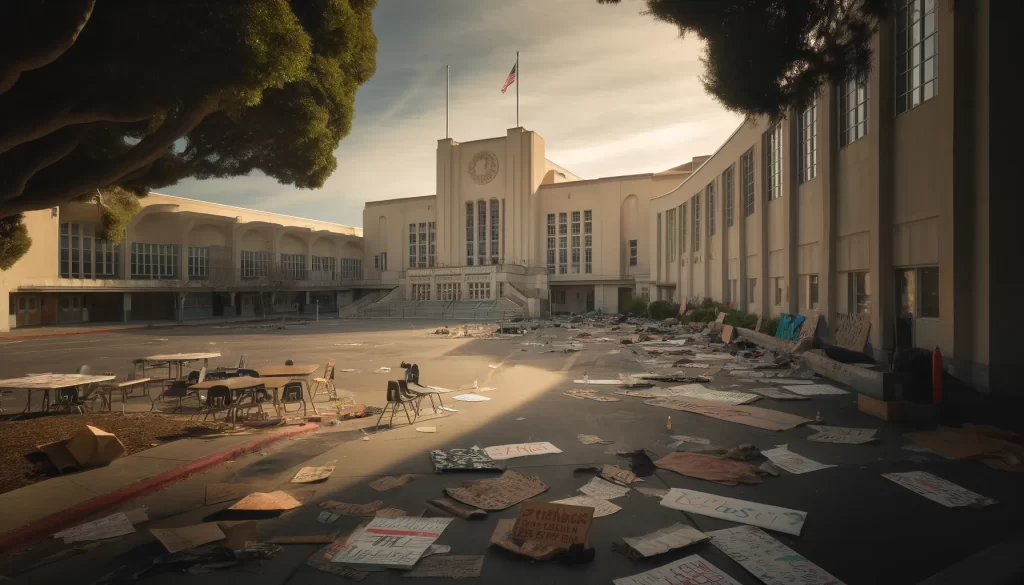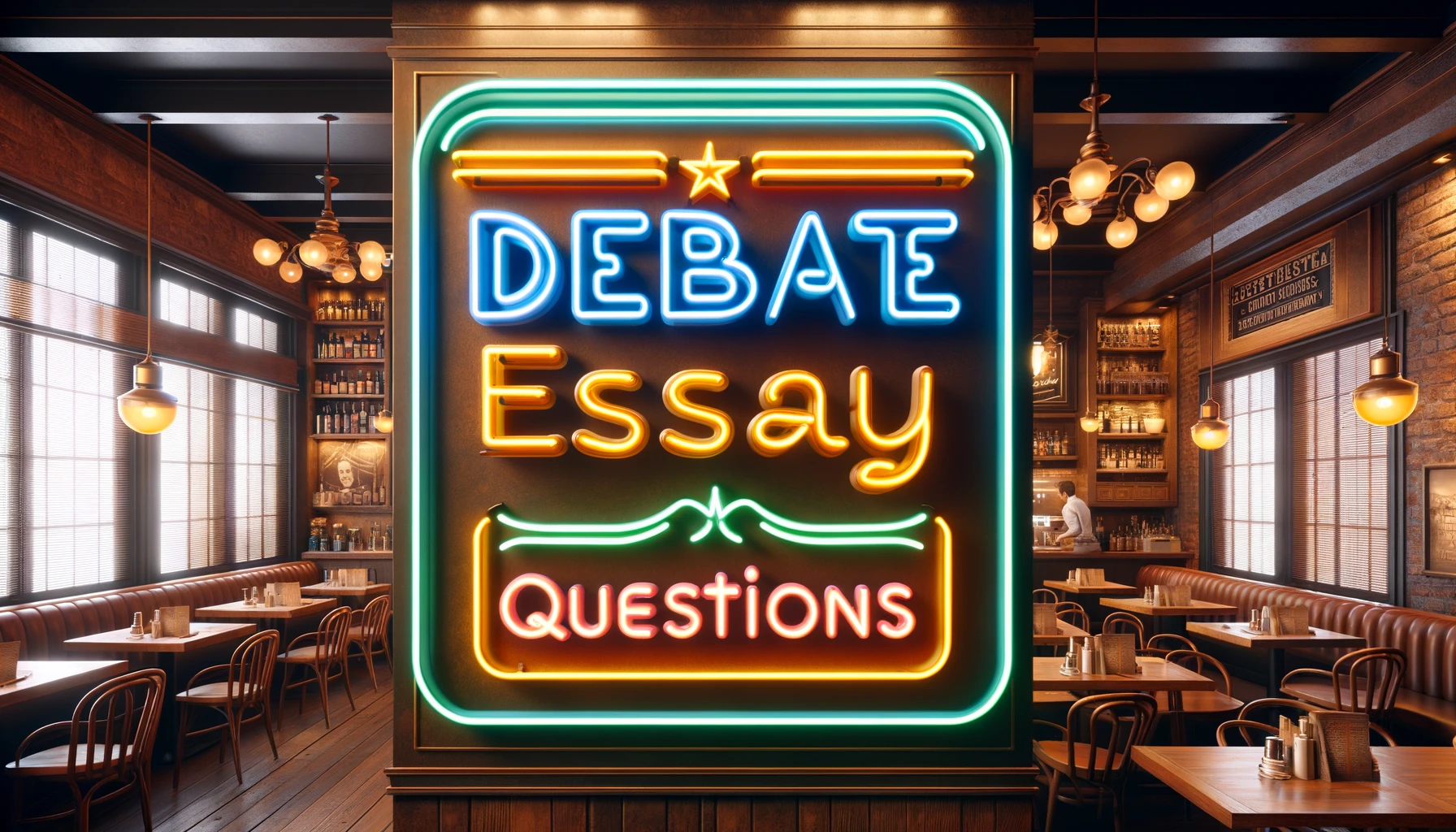On October 18, hundreds of Berkeley High School students, supported by several of their teachers, left their classrooms to gather at a nearby park for a protest. The students raised their voices, chanting slogans like “Free Palestine!” and “Stop bombing Gaza!” as well as “From the river to the sea!” One of their teachers, Becky Villagran, addressed the approximately 150 students present, reminding them that the casualties in Gaza were more than mere statistics.
Berkeley High School has a long tradition of student activism. In the 1960s, students protested against the Vietnam War. In the 1990s, they advocated for the creation of ethnic studies courses. More recently, the student body has been active in supporting various causes, including Black Lives Matter, immigration reform, reproductive rights, and LGBTQ rights. This history of activism underscores the school’s engagement in social issues.
However, this particular protest caused unexpected ripples through the Berkeley public school system and the local community. Some Jewish students and their parents, who identify as Zionists, expressed fear and concern over the rhetoric used during the protest. They were particularly alarmed by a chant they interpreted as a call for the destruction of Israel, describing the situation as promoting a form of anti-Jewish sentiment.
The issue escalated to a national level when Enikia Ford Morthel, the superintendent of the Berkeley schools, was scheduled to testify before a congressional committee. This testimony is part of ongoing Republican-led investigations into antisemitism on school campuses. These investigations have previously led to significant outcomes, including the resignations of high-profile university presidents and critical evaluations of other university leaders’ responses to campus incidents.
The Berkeley Unified School District, which serves approximately 9,000 students, is highly diverse. Arabic is the third most spoken language within the community, and there is a substantial Jewish population. This diversity is a reflection of Berkeley’s broader demographic and ideological makeup, which is traditionally liberal and politically active. The city itself, with a population of about 118,000, is located in the tech-driven Bay Area and retains a unique blend of modern and traditional influences, fostering a community typically united in its political and social viewpoints.
However, the fallout from the recent violence between Hamas and Israel has introduced significant divisions within this community. The discord was evident in the heightened tensions at a recent school board meeting, where parents expressed divergent and passionate views. This situation has been further complicated by a federal complaint initiated by the Anti-Defamation League and the Louis D. Brandeis Center for Human Rights Under Law. The complaint accuses the school district of allowing persistent discrimination against Jewish students, including claims that some teachers are spreading antisemitic beliefs.
The focal point of the complaint surrounding the controversy at Berkeley High School concerns several teachers’ actions. One prominent incident involves an art teacher who was put on administrative leave after allegedly displaying provocative imagery to his students. This imagery included a depiction of a fist adorned with a Palestinian flag forcefully breaking through a Star of David, which many found offensive and inflammatory.

The complaint also centers significantly on Becky Villagran, a seasoned educator with 12 years of experience at Berkeley High, where she leads the history department within the school’s International Baccalaureate program. The complaint lodged against her accuses her of perpetuating antisemitic stereotypes and defamation during her lessons. A specific example cited in the complaint involves a classroom discussion she initiated, where she asked her students to consider whether Israel should be regarded as an apartheid state. This discussion took place shortly after the events of October 7, which had heightened tensions and sensitivities.
Ms. Villagran has responded vigorously to these allegations, dismissing them as distortions and outright falsehoods. She explains that her approach to teaching about Israel and its neighbors aims to be balanced and inclusive of diverse viewpoints. Ms. Villagran also highlights her personal background to counteract the claims of antisemitism, noting her Jewish upbringing and her active practice of wearing a “Free Palestine” pin to work, which she views as a symbol of her advocacy for peace and justice, not as an endorsement of antisemitism.
In her defense, Ms. Villagran acknowledges the lesson on apartheid, which she justifies by pointing out that it followed a three-month-long curriculum on apartheid, making the timing appropriate and educational rather than provocative. She also admits to showing a film critical of Israel but insists that she provided her students with additional readings that presented counterarguments. According to Ms. Villagran, the resultant classroom environment was not one of indoctrination but of active debate and discussion, with students expressing a range of views about the nature of Israel’s policies and actions.
The broader repercussions of these events have reverberated throughout the Berkeley High community. Following the initial protest, more walkouts occurred, and school board meetings became arenas of intense and sometimes hostile debate. The atmosphere in the school and community has led to significant discomfort among students, with reports of both overt conflict and subtle tensions. Some students, particularly those from Zionist families, report feeling alienated and sometimes targeted, leading them to conceal symbols of their Jewish identity, such as Star of David pendants or T-shirts from Jewish summer camps.
Jewish groups with opposing views also exist within the community. The Berkeley Unified School District Jewish Parents for Collective Liberation supports a nuanced understanding of the Palestinian cause and argues against the portrayal of Jewish students as oppressed within the school system. In contrast, the group Berkeley Jews in School consists of parents and families who are pushing back, asserting that antisemitism is indeed a serious and pervasive issue within the school and at student-led protests.
Ilana Pearlman, involved with Berkeley Jews in School, is a parent whose mixed-race and Jewish son experienced direct implications of the tension. Her son, a freshman, was present in the art class when the controversial image was shown. He later felt compelled to minimize his Jewish identity in school projects, focusing instead on his Black heritage due to the perceived hostile climate towards Jewish students. When, noting his whole Jewish side absent from his ancestry project for school, Ilana Pearlman confronted her son by asking him, “What about your Jewish side?” her son said to her, “Mom, it’s not the right climate for that.”
This article is based on the following article:

Background Information
Understanding these elements can help readers navigate the complexities of the article about Berkeley High School and appreciate the depth of the issues discussed, the emotional and historical weight they carry, and their impact on a diverse school community like Berkeley’s.
1. The Israeli-Palestinian Conflict
- Overview: This conflict is a long-standing struggle between Israelis and Palestinians that began in the mid-20th century, primarily over land and national identity. Israel was established as a nation-state for Jews in 1948, in part of what was then British-controlled Palestine. Following this, wars and disputes led to the current divisions, with Israel controlling certain territories that Palestinians claim for a future independent state.
- Key Issues: Major issues include the borders of Israel and Palestine, the status of Jerusalem, Israeli settlements in occupied territories, security concerns, and the rights of Palestinian refugees.
2. Apartheid
- Definition: Originally a term used to describe the system of segregation and discrimination on racial grounds in South Africa from 1948 to 1994. It literally means “apartness” in Afrikaans.
- Application: In the context of Israel, some groups and critics compare Israeli policies towards Palestinians, especially in the West Bank and Gaza, to apartheid because of restrictions and different treatments based on ethnicity and nationality. This is highly controversial and debated.
3. Antisemitism
- Definition: Antisemitism is prejudice, hostility, or discrimination against Jews as a religious, ethnic, or racial group. This has historical roots going back thousands of years, often culminating in severe violence, most notably the Holocaust during World War II.
- Modern Context: Today, antisemitism can manifest in various ways, from violent attacks to subtler forms of discrimination or spreading of stereotypes.
4. Activism in Schools
- Student Activism: This refers to students advocating for causes they believe in, often related to political, environmental, or social justice issues. Schools like Berkeley High have a long history of student activism, reflecting broader societal movements.
- Educational Impact: Activism can be a powerful learning tool, teaching students about civic engagement, democracy, and social issues. However, it can also lead to tensions if views clash or if activism is perceived as disrupting education.
5. Significance of Symbols: The Star of David
- Cultural and Religious Importance: The Star of David, a six-pointed star, is a significant symbol of Jewish identity and faith. It is also featured on the flag of Israel.
- Controversial Usage: In political and social contexts, especially those involving Israel, this symbol can become a point of contention or be used in protest imagery, sometimes leading to accusations of antisemitism depending on the context.

Debate/Essay Questions
- Does labeling a country as an “apartheid state” in an educational setting constitute bias, or is it a valid academic inquiry?
- Are schools obligated to provide equal representation of opposing views on political or human rights issues?
- Is student activism in educational settings more beneficial or disruptive to the learning environment?
- Should teachers remain neutral on political issues, or is it appropriate for them to express their views and encourage students to explore controversial topics?
- Is the comparison of Israeli policies to apartheid justified or does it constitute a form of antisemitism?
Please subscribe to Insight Fortnight, our biweekly newsletter!
